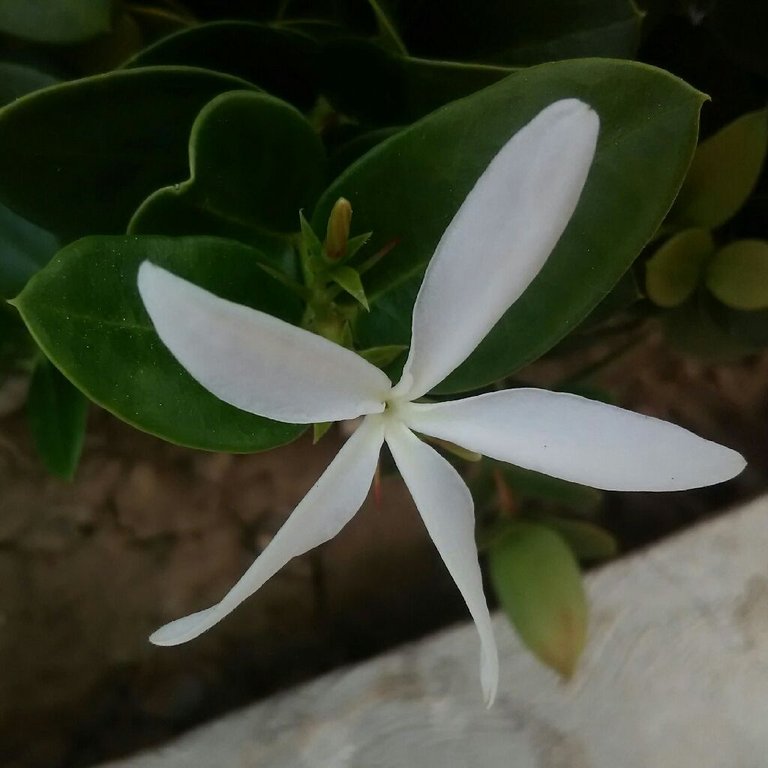Hello, Hive Garden community!
Finally, I can share some good news about this plant I've been taking care of for almost three years!
Just a short backstory. I got this plant from a high school classmate when we had a little reunion at her home back in 2022. We were lounging at their porch late afternoon when our eyes wandered at their plants and trees. Her mother identified each of them and mentioned the tree at one corner is goji berry. All of us were interested and asked if we can have a seedling or plant. Her mother gladly gave us some of their cuttings which have already grown roots.
Since then, I've been consistent on watering the plant and transferred it to a bigger pot. Fast forward this year, its branches have been growing longer and obstructing our pathway so I decided to trim or prune the branches. I didn't realize that this will catalyze the plant's fruiting.
Around March, I've noticed that it has began to produce some flowers. And just about two weeks ago, I was surprised to see some fruits growing.
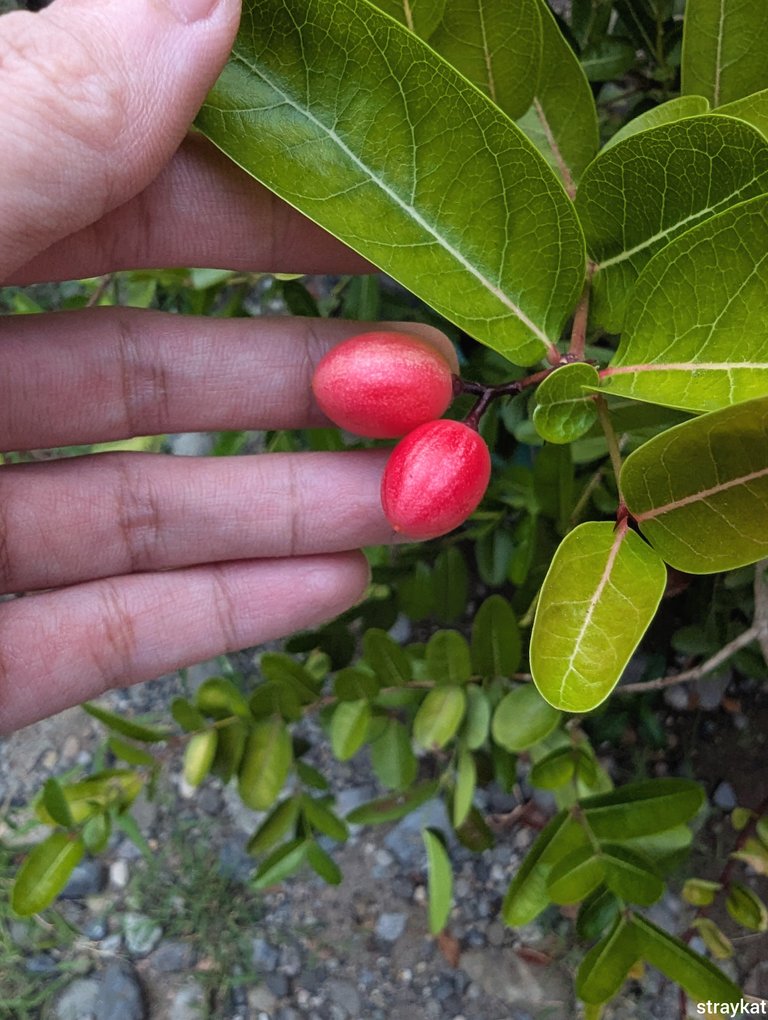
They looked so cute! So I did a little research when I can harvest it. However, the images of goji berries I saw online have different color to the fruits of my plant. I was confused. Goji berries on photos are red like tomatoes but this one here have pink shade. Maybe it's a local type of goji berry?
And finally, the little voice in my head reminded me that we're to take advantage of technology. Use that circle search on your phone!
Right! Why I haven't thought of that sooner?

And just like that, the mystery has been solved! It's not goji berry but a...
KARONDA
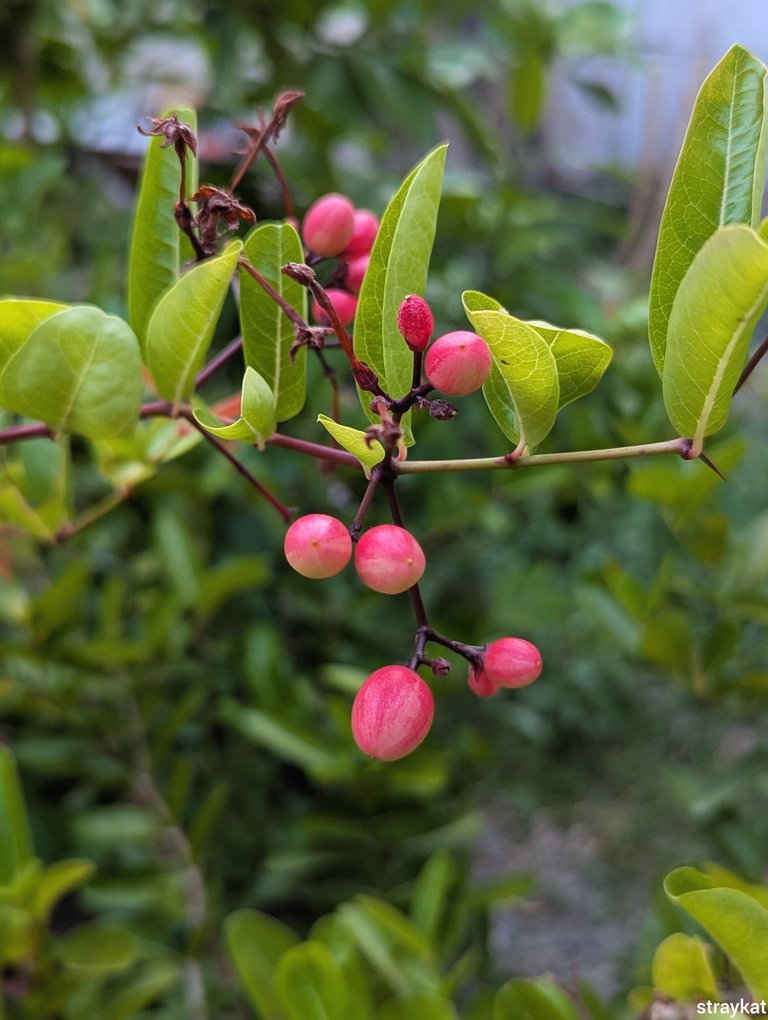
Karonda, Karanda, Carissa Carandas, or Christ's Thorn is a shrub originating from India and Southeast Asia. For almost three years, I thought I was going to have goji berry fruits. Lol. Anyway, good news because Karonda also belongs to the berry family. Maybe I should also let my classmate know next time we meet.
I read this plant is also used in Indian cuisines. It has a sour taste when unripe and becomes a bit sweet when ripe. I also saw on videos that a ripe Karonda is deep purple in color, almost like grapes. It is eaten as is or use it for pickle, jam, or juice.

The Karonda is also used in Ayurvedic medicine as it's known to be rich in phytochemicals (antioxidant, flavonoids, and phenolic compounds) and nutrition. It fights oxidative stress which is linked to the development of cancer.
What amazes me as well is that Karonda also containes magnesium and tryptophan which could help in the production of serotonin, the happy hormone. And with that, Karonda is believed to help improve mental health. Gosh, I need a karonda farm!
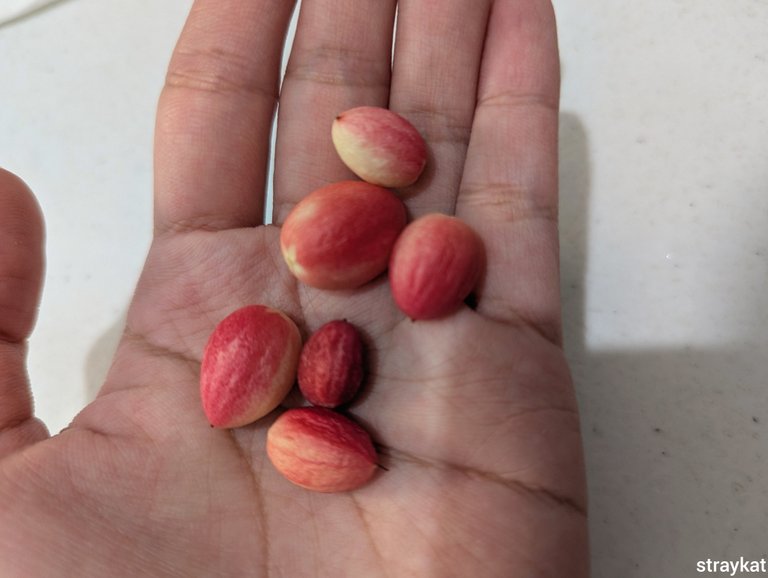
I already picked some and didn't know these were still unripe. I set them aside and have forgotten to eat them because I got a bit busy this week. When I went back to check it, they already looked dehydrated.
Is this still okay to eat?

Well, I tried to taste it. The pink one indeed has a sour taste but at the same time bitter. It's probably due to the sap surrounding the flesh inside. Maybe I should peel the skin and wash the sap off. Meanwhile, the purple has a little sweet taste but also has some bitter taste in it. Anyone who has tried this fruit knows how to remove its bitter taste?


Anyway, there's still a few left growing. I'll be patient and wait for these to ripen. There's also one cluster which might flower soon. I just hope the flowers don't wither so they'll successfully produce fruits.
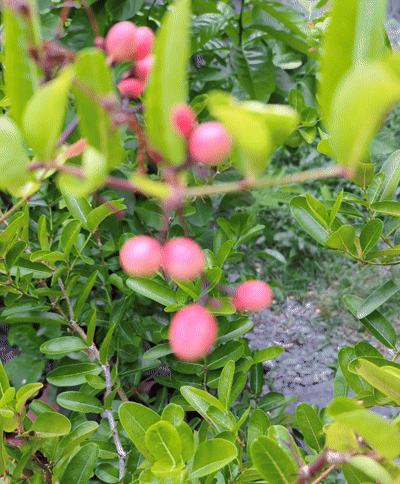
It may not be a goji berry but I'm still thankful and lucky to have this Karonda plant. I wish it produces more fruits next time so I can make a juice or jam out if it. For now, I'll have to give it more care and try to grow a new karonda plant from cuttings and seeds. I hope my green thumb works this time!
Thanks for reading! 💚

